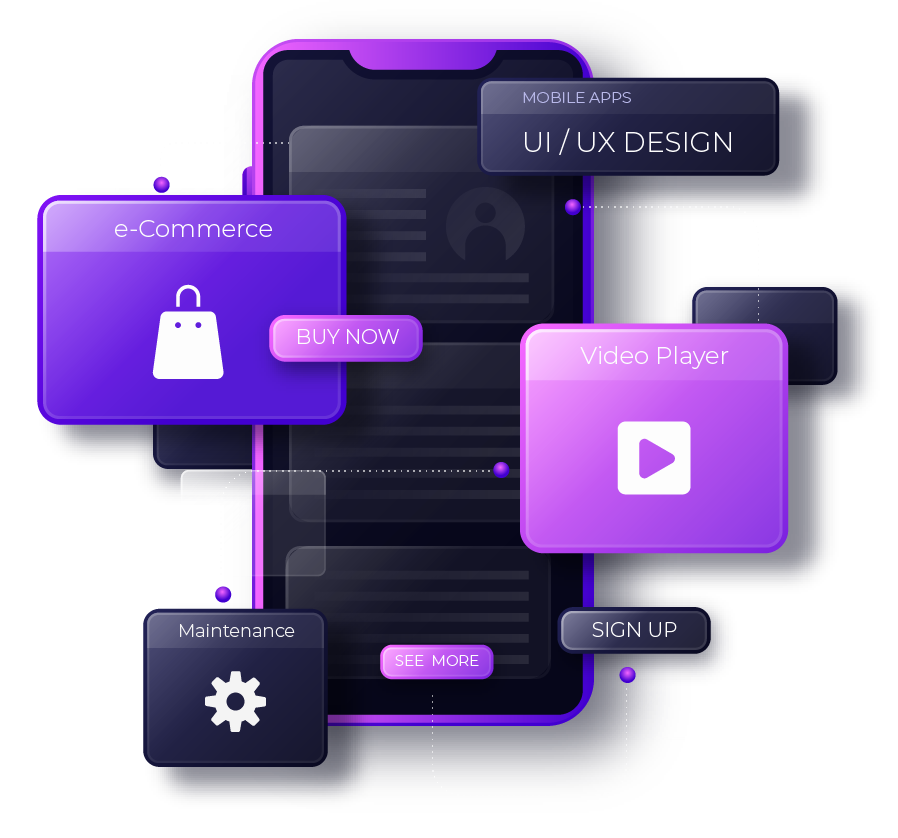UI/UX Design
UI/UX design meets user-centric innovation. I can crafts digital experiences that seamlessly blend aesthetics with functionality, ensuring your users journey effortlessly through captivating interfaces. Elevate your digital presence with designs that inspire, engage, and leave a lasting impact.

I believe in the transformative power of user-centric design, where every click, swipe, and interaction is a meaningful journey. At the heart of our approach is a commitment to understanding its users, blending creativity with functionality, and crafting interfaces that not only look stunning but also elevate the overall user experience. From in-depth research and wireframing to the final polish of high-fidelity prototypes, I am dedicated to shaping digital landscapes that captivate, engage, and leave a lasting impression. Whether you’re launching a new product, revamping an existing platform, or seeking to enhance user satisfaction I am your partner in the pursuit of exceptional design.
Design Process
- User Research:
Understand the target audience, their needs, and behaviors through interviews, surveys, or analytics.
- Competitor Analysis:
Study competitors’ designs to identify industry trends and potential areas for differentiation.
- Project Objectives:
Clearly define the goals and objectives of the UI/UX design, aligning with business and user needs.
- User Personas:
Create detailed personas representing different user types and their characteristics.
- Site Map:
Develop a site map to organize content and structure the user journey.
- Wireframes:
Create low-fidelity wireframes to outline the basic layout and structure of the interface.
- Concept Sketches:
Generate rough sketches exploring various design ideas.
- Brainstorming:
Ideate on different design elements and features for the interface.
- High-Fidelity Prototypes:
Develop interactive prototypes using tools like Figma or Adobe XD.
- User Flows:
Map out the expected paths users will take through the interface.
- Color Scheme and Typography:
Choose a color palette and typography that aligns with the brand and enhances readability.
- UI Elements:
Design visually appealing UI elements, including buttons, icons, and forms.
- Iterative Design:
Refine and iterate on the design based on feedback and testing.
- Responsive Design:
Ensure the design is responsive for various devices and screen sizes.
- Usability Testing:
Conduct usability testing with real users to gather feedback.
- Feedback Integration:
Implement feedback and make necessary adjustments to improve usability.
- Design Handoff:
Prepare design assets and documentation for development.
- Animations and Microinteractions:
Incorporate subtle animations and microinteractions for a polished user experience.
- Collaboration with Developers:
Work closely with developers during the implementation phase.
- Asset Delivery:
Provide developers with design assets and specifications for accurate execution.
- Launch:
Release the designed interface to the public or intended audience.
- Performance Monitoring:
Monitor user interactions and gather analytics to assess the design’s success.
- Post-Launch Feedback:
Gather feedback after the launch and plan for future iterations.
- Continuous Improvement:
Iterate on the design based on user feedback and evolving requirements.
